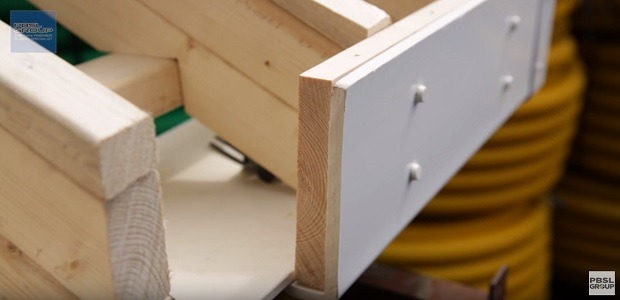Cover Boards Or Replacement Fascia?
PVC Fascias are available in a number of colours and styles, from standard White to Ogee to Black Ash Woodgrain. Whichever type and colour of board you choose however it will always fall into one of two categories - it will either be a Cover Board or a Full Replacement Board. In the paragraphs below, we have listed the key differences between the two and the considerations for buying each type.
Size and Colour
Both types of board are available in a wide range of sizes. Cover boards generally start at 100mm Depth and are available up to 275mm in depth. Replacement Fascias are available in depths from 150mm up to 250mm. Both types of board are also available in larger depths (for collecting customers only due to carriage restrictions), and both come in the same wide range of colours.
Floplast cover boards are 9mm wide, whereas Floplast Replacement Fascias are 18mm wide.
Load Bearing
Here is where the main difference between the two types of board can be found. All Fascia Boards by their nature are load bearing, supporting the guttering that is fixed to them. However it is very important to note that cover boards on their own are not load bearing, they should always be fixed to a backing board of some kind and never installed directly onto rafter ends. In refurbishment situations the backing board that supports the new cover board is usually the original timber fascia board, although you should ensure that this board is free from any rot and is strong enough to support both the cover board and the guttering before commencing the installation. Many contractors do also use cover boards in new build situations, fixing them directly to a new timber backing board (usually 1" thick sawn timber).
Replacement Fascia Boards being that much thicker are load bearing on their own. They are fixed directly to the rafter ends and guttering can be fixed to them anywhere along their edge. This makes them the ideal choice for new build projects, or in refurbishment situtations where the old timber fascias are too far gone to be able to support a cover board.
The image below demonstrates how cover boards can be used in a New Build Situation using a backing board for support.

Design
Cover boards are always an L shaped profile. The sharpness of the angle of the return leg varies between manufacturers. Our Floplast cover boards have a rounded angle on the return which softens it somewhat. Cover boards are also available in an Ogee design with a feature groove along the front edge.
There is a wider variation of profile choice with replacement boards. The standard board is similar in appearance to the cover boards, but Bull Nose and Ogee options are also available for those looking for something a little different.
Cost
Cover boards are approximately 30 to 40% cheaper than replacement boards, but is important to factor in the additional cost of the backing boards and any additional labour required to install cover boards. This will of course vary according to the exact nature of each individual installation.
Fixings
Cover boards should be fixed with 50mm Polytop Nails, replacement fascias are installed using 65mm Polytop Nails. Polytop Nails, regardless of size, should always be A4 Marine Grade Stainless Steel. Inferior quality fixings will quickly ruin a new installation, with rust marks staining the surface of the fascia board being a tell-tale sign.



